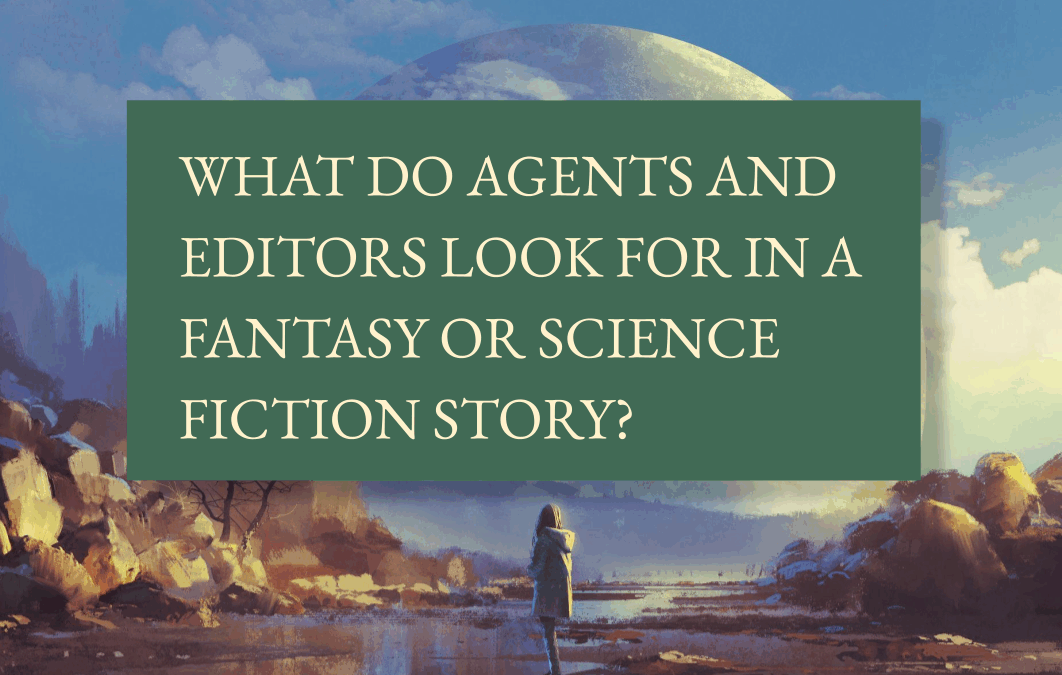No two people are the same, and that goes for fiction editors as well. Some love traditional formats, some love experimentation, others crave comedy, and many seek out twist endings. The list is really endless on what any one editor or publication is looking for.
That said, as a short story fiction editor myself, I can try to help narrow the possibilities to at least the top five aspects, which I would argue are more or less universal, that editors look for when analysing a short story or novel.
1. Begin the story when the character is at the scene
Many times, newer authors will ‘walk’ the reader into the story. This can include a character literally walking to a location or driving somewhere. The point is, the character is not yet where they need to be. You can certainly have a successful story where the character is not yet where they need to be, but it’s difficult to get an editor to read beyond the first couple of paragraphs if nothing is happening.
An example of a character walking into the scene (that works) is Ray Bradbury’s short story, ‘The Pedestrian.’ The story opens with just that: a man walking. But that’s what the story is about. The walking is the conflict. Bradbury can pull it off, but not many can.
I recommend beginning the story when the character has already arrived where the conflict is located. If not, you risk losing an editor’s and reader’s interest just before it starts getting good. So why not begin when it’s good?
2. Establish the conflict in the opening sentences.
Speaking of conflict, it should be established in the opening paragraph. This is different from beginning the story with conflict. To begin a story with conflict might mean depicting an argument, a fight, or a war. However, those set-ups often end up as chaotic opening scenes that lack context to understand or appreciate what is going on.
What I prefer, and I think many editors and agents do as well, is when the author gives the reader an idea of what the main problem is without stating it or showing it outright. Simply establish the conflict.
For example, a character could be missing – but don’t say where they are. That indicates the story might be about finding the way home or the reason for being lost. Or maybe it hasn’t rained for ten years – but don’t explain why. Now the story could be about a magical phenomenon causing an imbalance to the environment. Show that a character has blood all over their hands – but don’t say whose. Now the story involves violence, but is it justified? All of these examples establish a problem immediately without summarising the whole story or revealing all the details. Just give the reader enough to know there is a central conflict and a reason to keep reading.
3. Know who the narrator is and commit to them
There are times when a story has a literal narrator, like a narrator in a play, or has a third-person omniscient voice often found in fairy tales. These narrators are like God, observing and relating the actions of the small people below.
There is certainly a place for such a narrator, but most of the time, the narrator is the main character or point-of-view character. It’s through their eyes that we see the story unfold. It’s with their thoughts we understand the greater context of the world. So that’s your narrator, and I recommend an author fully commit to one.
I have found that stories tend to be stronger and more engaging when there is a single, close point-of-view character for each scene, chapter, or for the entire story. ‘Hopping heads,’ as it’s called, within a scene can get confusing and/or the reader realises there is now an omniscient narrator somewhere when there wasn’t one before, and the story suddenly feels less immersive and interesting.
I think this is especially important for genre fiction, when the reader is learning about new worlds and has a higher chance of getting confused than other forms of fiction. Do them a favour and don’t hop heads. The less the reader feels confused, the more they can focus on your story and lose themselves in it.
4. Raise the stakes and make them personal
Most authors have a good grasp of needing to have conflict in their stories and a path to solving the conflict. However, it’s the standout stories that also establish compelling consequences.
Another way to put it is, what will happen if the character fails?
Let’s say a heroine needs to slay the dragon that is picking off travelers on the road and stealing their treasures. She’s been training for this. She wants to prove herself as a dragonslayer. That’s a great set-up. But what happens if she doesn’t slay the dragon? What’s the consequence of failing? More merchants are injured? Their goods are stolen? Fair enough, but those are low stakes in terms of story and worldbuilding.
Think more about the POV character, the heroine the reader has connected with and cares about. This is her story. What happens to her if she fails? Those are the personal stakes that readers care about and that elevate a story above others.
It goes back to worldbuilding. Does your dragon-slaying society banish those who fail to slay dragons? Does a dragon who survives a slaying traditionally burn down the village in retribution? Having high personal stakes motivates characters, creates suspense, and deepens worldbuilding.
5. Avoid author convenience
Finally, something to avoid at all costs is having story events occur because the author wants them to occur that way. This creates plot holes and characters who behave inconsistently for the sake of certain events happening.
For example, the author needs the story to wrap up, so they conveniently have the villain change his mind about wanting to destroy the universe. Another example might be that a character is worried how everyone will react to the news of the crimes they’ve committed, but then there’s no reaction. Everyone is fine with it.
Usually, author convenience is used to solve a problem the writer wrote themselves into and didn’t know how to get out of, or they didn’t want their characters to suffer too much.
Instead, ask yourself what would organically and logically happen in this world you’ve created. According to the personality and psychology you’ve imbued your character with, what would they naturally do in this situation?
Even though these are fantastic worlds, futuristic settings, or supernatural beings, they should still follow the rules of cause and effect and be as realistic as possible. It’s the realism within fantastic fiction that catches the eye of editors and agents.
Final thoughts
I’ve been an editor for about ten years, and my longest stint has been as fiction editor at James Gunn’s Ad Astra speculative fiction magazine, where I am currently. These five are the topics I discuss most often with my editor-in-chief when deciding which stories we want to publish, which we want to help the author revise, or pass on. They are the areas that, when mastered, elevate stories to the top of the list.
I hope my top five shed some light on what you can do as an author to polish up your stories and novels to get them sold and published. Good luck!
Jalyn Renae Fiske serves as Fiction Editor for James Gunn’s Ad Astra magazine and has her MFA in creative writing. Her debut fantasy, horror, and science fiction collection, Side Quest: Stories, was released in 2024. You can find her at her website.
Do you write fantasy or science fiction?
Join our email list for regular writing tips, resources, and promotions.

